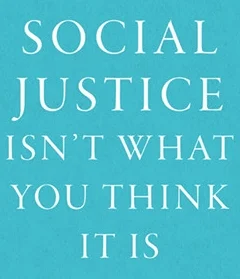The Making of Christian Morality - A Review
There is a common approach to Christian ethics, especially among revisionists, that views the development of Christian thought as a synthetic process rather than an organic one. That view is on display in David Horrell’s recent book, The Making of Christian Morality: Reading Paul in Ancient and Modern Contexts.
Horrell is professor of New Testament studies at the University of Exeter. I was introduced to him through his work in ecotheology, particularly in his attempt to re-read Paul’s letter through an environmentally friendly lens in Greening Paul: Rereading the Apostle in a Time of Ecological Crisis, and his plea for revising Christian hermeneutics in light of environmental concerns in The Bible and the Environment.
Although Horrell’s title includes the entire New Testament, the bulk of his career has been invested in Pauline studies. For Horrell, the study of Paul is distinct from the study of Christian thought, since he views Paul’s writings and those he believes to be incorrectly attributed to Paul to be radically different from the rest of the Christian tradition. This sort of approach, which is fairly typical in critical approaches to Christian scholarship, makes reshaping Scripture for his desired purposes much easier.
The Making of Christian Morality is a collection of essays, all of which were published elsewhere or delivered as conference papers. The result is a somewhat loose connection of individual entries in topics that interest Horrell rather than a cogent argument about a particular topic.
The book contains three parts, with each section focusing on a particular subject of concern. Part One deals with Horrell’s interest in the socio-historical context of Paul’s writings. His first essay begins by ignoring the possibility of continuity between the authors of Scripture, but goes on to argue against distinct “Pauline” churches, which are a central plank in the arguments of some revisionists. In Chapter Two, Horrell debunks some popular constructs about early church architecture largely by revealing the slim evidence that some conclusions (which have and will likely make their way into commentaries and sermons) were based on. This is the most useful essay in the volume and relies on interdisciplinary research that basically calls for Christian scholars to hold their opinions until further evidence can be uncovered. The third essay largely argues from silence and conjecture that Philemon may have been a middle-class Christian instead of a major patron of the church. This apparently is a significant topic of concern in Pauline studies. The most significant contribution of this essay is Horrell’s astute observation that the supposed household baptism that forms the strongest biblical evidence for paedobaptism was not evidenced in Philemon’s household, where Onesimus was converted well after his master. Chapter Four explores the way the language of family was used in the Pauline corpus. The argument of this chapter functions best alongside Horrell’s assumptions about what is authentic and inauthentic, which, to little surprise is partially a function of the conclusions he and others draw about the use of language in the letters attributed to Paul.
Part Two shifts to the topic of Pauline ethics. The fifth essay begins with the assertion that “in the study of Pauline ethics the contours of current debate are still shaped by the early contributions of Rudolf Bultmann.” This helps explain the limited value of Horrell’s work and other works on “Pauline ethics” for Christians and those who study Christian ethics. This essay emphasizes the centrality of the resurrection in Pauline ethics, but resolves with a whimper as Horrell considers how that vision can help lead toward a Rawlsian consensus ethics, which is an essential part of the liberal order as Horrell sees it. In Chapter Six, Horrell uses Pauline ethics to argue that ethics ought to be culturally determined. That is, that a Pauline ethics is best evidenced by agreement with and enforcement of norms that are generally socially acceptable. To oversimplify the case (but still to give a sense of the argument), a Pauline ethics is one that rejects Christians as a contrast community and develops a community of people that affirm the values of the culture better than the culture. The seventh chapter explores the concept of humility as a central part of a Pauline ethics (though largely consistent with and perhaps drawn from other non-Christian sources.).
In Part Three Horrell shifts to a discussion of contemporary application of Pauline ethics. The first essay, which deals with various models of ethics, is largely a call to see Scripture as an insufficient basis for ethics. Horrell writes, “So, while reading Paul in the context of our contemporary debates can be suggestive and fruitful, using Paul’s texts to ‘think with’ does not by any means suffice for the task of thinking about adequate models for Christian ethics, but only marks the beginning of the work.” In a different context that statement could be taken as hopeful, but Horrell’s intent is to reject the sufficiency and authority of Scripture and encourage his readers to rely on other (and perhaps contradictory) sources for moral authority. Chapter Nine is something of an abbreviated version of Horrell’s book, Greening Paul, and is another entry into the genre of revisionist scholarship that tries to recover themes from Scripture that reinforce a particular desired outcome. This essay highlights the central emphasis of Horrell’s project as he writes, “reconfiguring our religious and cultural traditions in light of the new challenges that face us is a crucial task.” Pauline studies are useful inasmuch as they power activism in that matches societies demands on the topics of particular concern. The book concludes with the tenth essay, which outlines some contributions that Horrell feels Paul can make to ecojustice, but ends with a fizzle when Horrell can be helpful to “reconfigure our vision of the world around us, and to ground a revised theology that (re)integrates humanity into solidarity with the whole community of creation––critical tasks indeed––but neither he nor any of the biblical writers can give us substantive answer to the question as to what, in concrete terms, we then should do.” According to Horrell’s own writing, then, the best thing for people to do may be to put the Bible down and start looking for answers in the ever-evolving pool of scientific research shaped by a never-static summum bonum.
Horrell’s work is excellent by the measures of critical biblical scholarship. His writing is lucid and clear. Those that accept his assumptions will likely find this book illuminating and thought provoking. Christian scholars that accept the integrity of Scripture will continually find themselves started by the overwhelming number of basic assumptions that rest on “scholarly consensus,” which in turn is often founded on wishful thinking and obtuse readings of Scripture.
This book illustrates the need for Christian ethicists to continue thinking about Scripture, orthodox Christian theology, and how to apply the vision inspired by those sources to contemporary issues like creation care. When the standard of scholarly excellence is supposedly set by those that deny the basic character and sufficiency of Scripture, there is a need for resources that interact with those sources and aid authentic, well-reasoned faith to the discussion.
NOTE: I received a gratis copy of this volume with no expectation of a positive review.





























Reading your Bible is a battle. There’s a reason why Paul lists Scripture as the sword of the Spirit in his discussion of the armor of God (Eph. 6:17). More even than that, Scripture reveals God’s character and is, thus, central to worshiping well (Psalm 119). That’s why reading the Bible is a battle.